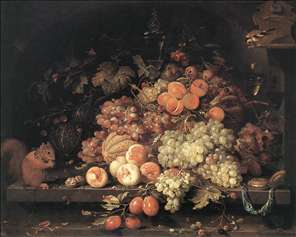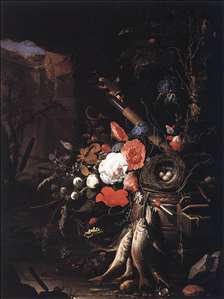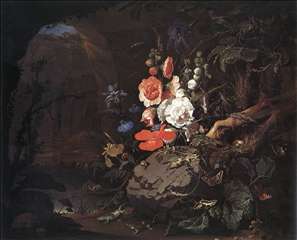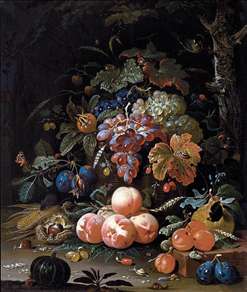Abraham Mignon was born in 1640, the son of French-Reformed emigrants living
in Frankfurt am Main. There he became the pupil of Jacob Marrel, who had himself
studied under
Georg Flegel and Jan Davidsz. de Heem . Mignon accompanied his
teacher on a number of journeys to Holland, finally moving in 1667 to Utrecht,
where he joined de Heem s studio and in 1669 became a member of the St Lukas
Guild. Returned to Frankfurt in 1676 where Maria Sibylle Merian became one of his pupils.
Although he died young, before he was even forty, Mignon was a prolific painter. Despite this, he does not appear to have dated any of his paintings. A chronology of sorts can be constructed from the changing style of his paintings, which gradually abandoned the softer naturalism of his years with De Heem in the 1660s for a slightly harsher realism, rendered in a particularly opaque and detailed technique.
Mignon, whose work consists primarily of flower and fruit pieces, is classified
on the strength of his birth and training in Frankfurt am Main as a representative
of German painting, but he can also be viewed as a member of the Dutch School
if the character of his work and the city in which he pursued his later career are
considered.






